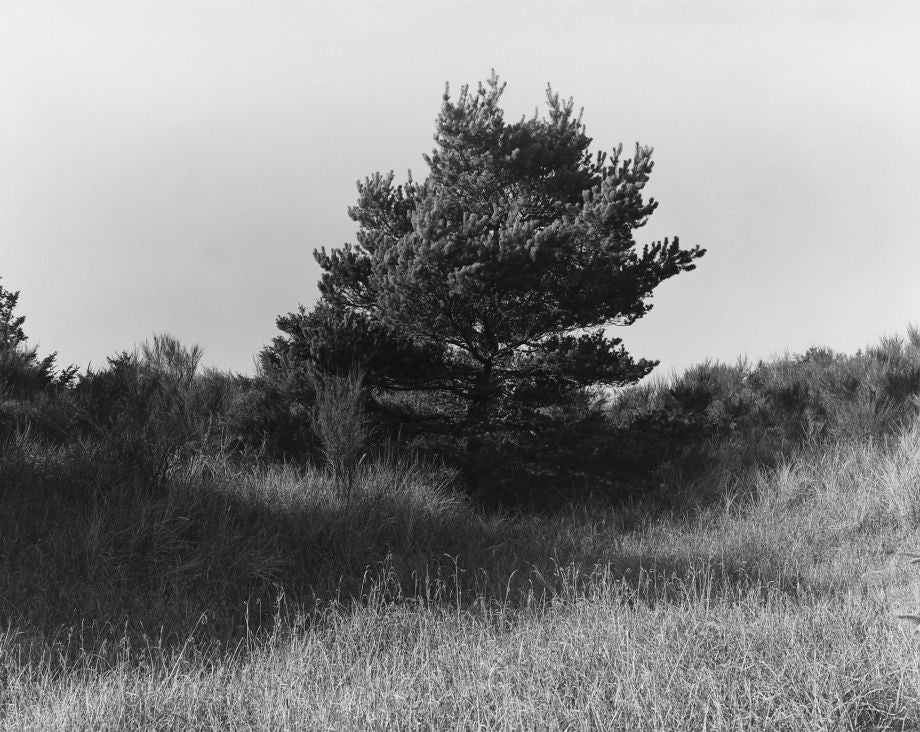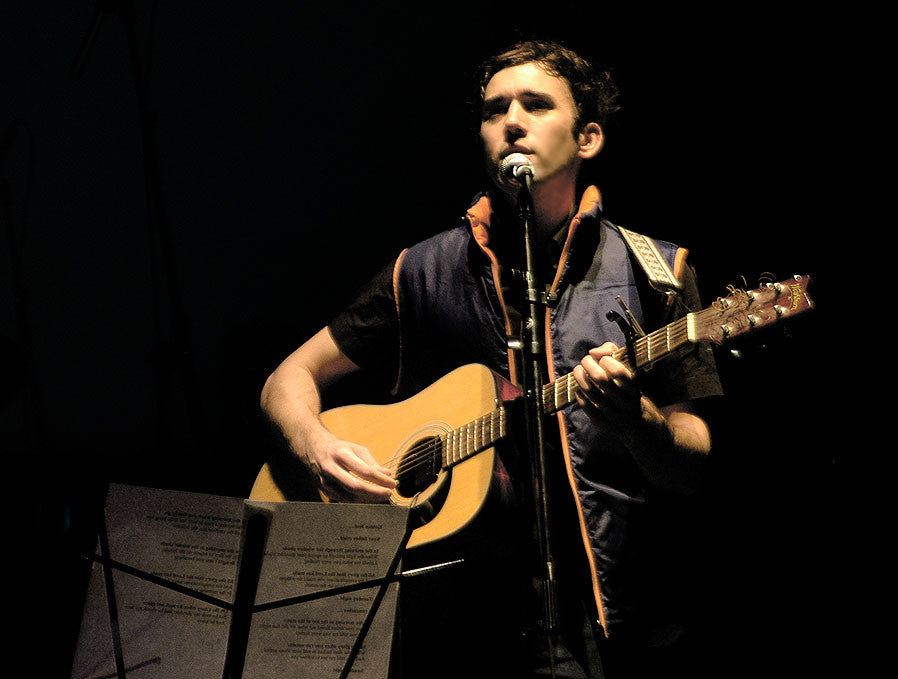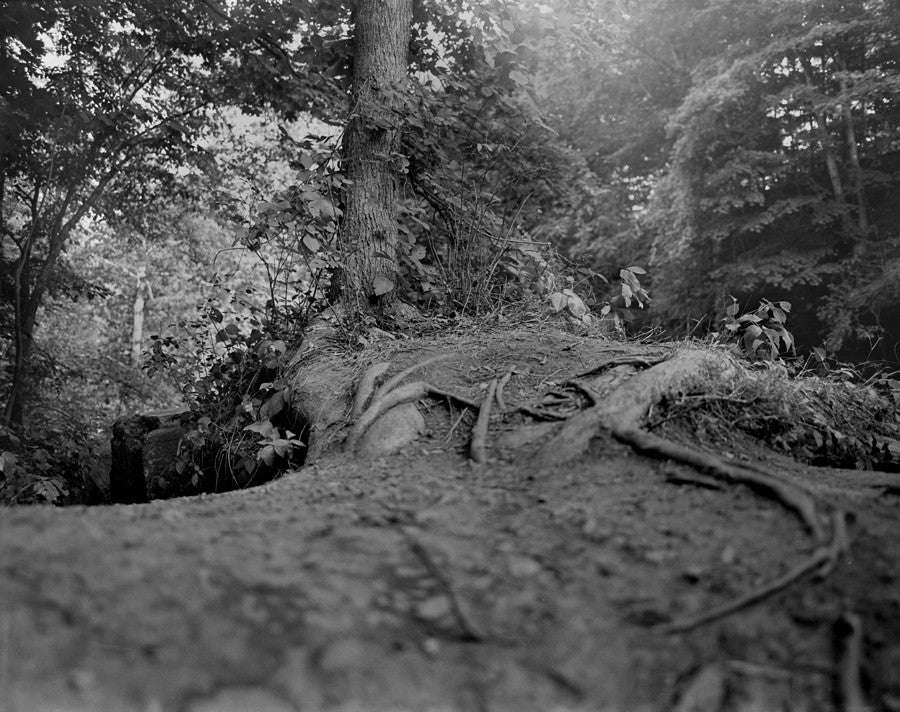
Intuitions of unity
My copy of Beauty in Photography is pretty heavily underlined throughout, and nowhere more than in the title essay. But with all the marks and margin notes I’ve made, there is only one instance of double underlining:
Why is Form beautiful? Because, I think, it helps us meet our worst fear, the suspicion that life may be chaos and that therefore our suffering without meaning.
There’s much to unpack in that short Q and A. To start, I must tell you that for the longest time I focused pretty much exclusively on the first part of Robert Adams’s equation: the idea that form in art argues against chaos, and thus assuages our apprehension about living in a mostly incomprehensible world.
I figured that that was enough to go on for quite a while, and that maybe the “suffering” part felt a little religious or quasi-mystical or something and that moreover the alleviation of suffering was probably something beyond the power of even Adams’s pictures.
But happily, one ages and thinks some more and gets the chance to read stuff by people way smarter than one’s self. And to reread. One might not need the authority of Nabakov to know that “there is no reading, only rereading,” but still it’s fun to have. It was actually a couple of favorite pieces of fiction revisited this autumn that got me to thinking about the entirety of Adams’s assertion. It’s a pleasing coincidence that both are Southern and sorta-Gothic and coexist easily in my mental space with Christenberry and Eggleston.
To wit:
he saw an idiot in a yard in a leather harness chained to a clothesline and it leaned and swayed drooling and looked out upon the alley with eyes that fed the most rudimentary brain and yet seemed possessed of news in the universe denied right forms, like perhaps the eyes of squid whose simian depths seem to harbor some horrible intelligence. All down past the hedges a gibbering and howling in a hoarse frog’s voice, word perhaps of things known raw, unshaped by the constructions of a mind obsessed with form.
So: forget the absence of form being merely chaotic. How about: completely fucking terrifying? Cormac McCarthy’s Suttree rejects expected societal forms but also realizes an ultimate limit to his project, however enticing it might be to truly know something “raw.” In fact, later in the book, Suttree sanely recognizes that “this shabby shapeshow . . . masks the higher world of form.”
While her prose is less specifically scarifying, Donna Tartt’s description in The Little Friend of the untethering of three generations of a Mississippi family that can’t process the murder of a beloved child is perhaps more devastating over the course of the novel:
Since this willful amnesia had kept Robin’s death from being translated into that sweet old family vernacular which smoothed even the bitterest mysteries into comfortable, comprehensible form – the memory of that day’s events had a chaotic, fragmented quality, bright mirror-shards of nightmare which flared at the smell of wisteria, the creaking of a clothes-line, a certain stormy cast of spring light.
The inability to bring formal cohesion to their loss renders the suffering of the Dufresnes family without meaning, and the chaotic fragmentation is ready at any easily-triggered moment to draw blood anew. The youthful heroine Harriet’s quest to find the murderer after many years is a whodunit story only in the sense that there is indeed a profound mystery to be confronted in how we formalize the stories that make life livable.
So the demands on form are indeed as substantial as Adams asserted; in fact they rise above artistic endeavors to the level of our interior lives, and deaths. I’ve tried to trace four (often overlapping) lines of thought on form, running from the active work of artists to the effects they have on how we all experience the world both within and without art.
Form and the original injury
I think of Cormac McCarthy and Donna Tartt as the sort of writers of whom John Ruskin says:
the more beautiful the art, the more it is essentially the work of people who feel themselves wrong; – who are striving for the fulfillment of a law, and the grasp of a loveliness, which they have not yet attained, which they feel even farther and farther from attaining the more they strive for it.
For further evidence of the striving, the grasp, the non-attainment, may I point you to All the Pretty Horses or Blood Meridian (if you can stomach it), or The Goldfinch (if you can bear it).
Christian Wiman has read his Ruskin:
There is a sense in which all art arises out of injury or absence, out of the artist’s sense that there is something missing in him, something awry or disturbed . . . the sense of wrongness that Ruskin is describing is a more pervasive, less easily isolated cause, some original injury that, for someone whose devotion took a similar form as Ruskin’s, would be something like a fall from grace, a sense of separateness and incompletion underlying the existence of every work of art . . .
Art – or to be more precise, form – is not only what enables artists to experience this sense of wrongness at all, which is their deepest being and will possess them one way or another, it is their only hope of wholeness and release. A genuinely felt form, one that is itself meaning and not merely a bearer of meaning is not some ready-made vessel within which the poet descends into experience . . . This ambivalence, this dual movement, the sense of loss that is inseparable from the fulfillment of form, is at the heart of the creative experience.
So I suppose that the idiot encountered by Suttree, without form to clarify (or to obscure?), at least doesn’t know of the brokenness of the world. As if that’s some compensation. McCarthy pulls a neat trick at the end of that description – “a mind obsessed with form” – what with obsession being something we might on principle wish to avoid; for half a second, the obliviousness that accompanies formlessness seems almost appealing.
But I cast my lot with Wiman (and with all the drawbacks of sanity): “the sense of loss that is inseparable from the fulfillment of form is at the heart of the creative experience.” The realization of this duality, I have come to believe, imposes moral obligations upon the artist.
Form and morality
“You don’t dream up a form and put the truth in it. The truth creates its own form.” So saith Flannery O’Connor, and so it is. The moral obligation of the photographer consists largely in fidelity to the real world, an effort to get out of one’s own head. “With a camera, one has to love individual cases,” according to Adams. “A photographer can describe a better world only by better seeing the world as it is in front of him.”
My devotion to objectivity – some sort of “truth” – in making pictures has been the subject of many a buzzed/drunken late-night conversation. You could charitably call some of them arguments. Not all of which I necessarily won. But nor did I lose them.
Anyway, I sincerely enjoy hearing different thoughts on all this (especially when accompanied by IPAs), if only to strengthen my own views. Iris Murdoch does (“did,” I know. I just prefer to think of pretty much everyone, dead or alive, as part of an active conversation in which they could respond.) not probably want to bend on these ideas, and that’s why I’ve come to value her more and more each year. Forgive me for quoting her at length:
Art, not fantasy art, affords us a pure delight in the independent existence of what is excellent. Both in its genesis and its enjoyment it is a thing totally opposed to selfish obsession. It invigorates our best faculties . . . It is able to do this partly by virtue of something which it shares with nature: a perfection of form which invites unpossessive contemplation and resists absorption into the selfish dream life of the consciousness.
Good art reveals what we are usually too selfish and too timid to recognize, the minute and absolutely random detail of the world, and reveals it together with a sense of unity and form. This form often seems to us mysterious because it resists the easy patterns of the fantasy, whereas there is nothing mysterious about the forms of bad art since they are the recognizable and familiar rat-runs of selfish day-dream. Good art shows us how difficult it is to be objective by showing us how differently the world looks to an objective vision. We are presented with a truthful image of the human condition in a form which can be steadily contemplated; and indeed this is the only context in which many of us are capable of contemplating it at all. Art transcends selfish and obsessive limitations of personality and can enlarge the sensibility of its consumer. It is a kind of goodness by proxy. Most of all it exhibits to us the connection, in human beings, of clear realistic vision with compassion.
Now I think that most of us are well bought into the idea of photography making manifest worldly detail, in a profusion possibly unmatched by any other art form. And I bet that many of us similarly appreciate “how differently the world looks to an objective vision,” which we might easily agree that we see, again in profusion, in the work of Robert Adams.
But of course the value of this passage lies in the stridency of its further assertions: 1) that form, because of its direct connection to the real world, works against solipsism; and 2) the escape from solipsism is to be equated morally with goodness and compassion; indeed it is nothing less than to be human.
This is heady stuff, and meeting these demands is to be neither easy nor fun. Speaking against the “easy patterns of the fantasy,” O’Connor warns: “You are not supposed to feel at home or at ease in any of the forms you see around you.” And the stakes are high, according to Murdoch:
Moral advance carries with it intuitions of unity which are increasingly less misleading . . . Freedom, we find out, is not an inconsequential chucking of one’s weight about, it is the disciplined overcoming of self. Humility is not a peculiar habit of self-effacement, rather like having an inaudible voice, it is selfless respect for reality and one of the most difficult and central of all virtues.
Form – these “intuitions of unity” – is directly related to humility, and is the key ultimately to our freedom.
Form and humility
As Murdoch says, humility has nothing to do with being some sort of shrinking wallflower, as one might think. Rather, it’s an active and effortful undertaking towards a “selfless respect for reality.” In an essay on Isaac Babel, Lionel Trilling asserts that “Babel’s preoccupation with form, with the aesthetic surface is . . . entirely in the service of his moral concern.” And further:
James Joyce has taught us the word “epiphany,” a showing forth – Joyce had the “theory” that suddenly, almost miraculously, by a phrase or a gesture, a life might thrust itself through the veil of things and for an instant show itself forth, startling us by its existence. In itself the conception of the epiphany makes a large statement about the nature of human life; it suggests that the human fact does not dominate the scene of our existence – for something to “show forth” it must first be hidden, and the human fact is submerged in and subordinated to a world of circumstance, the world of things; it is known only in glimpses emerging from the danger or the sordidness in which it is implicated. Those writers who by their practice subscribe to the theory of the epiphany are drawn to a particular aesthetic. In the stories of Maupassant, as in those of Stephen Crane, and Hemingway, and the Joyce of Dubliners as in those of Babel himself, we perceive the writer’s intention to create a form which shall in itself be shapely and autonomous and at the same time unusually responsible to the truth of external reality, the truth of things and events. (italics mine)
This is pretty important, I think: the argument against individual solipsism is broadened to cover the species-wide condition: “the human fact is . . . subordinated to . . . the world of things.” This is particularly meaningful for photographers, as the very best and most meaningful photographs offer excellent support for Joyce’s theory; they are little miracles, piercing the veil of things to show us the truth of external reality, at least for 1/125 of a second or so.
Humility in the face of the world is in fact the greatest gift of the camera; recall Adams’s argument for the love of “individual cases.” But also recall Murdoch’s connection of humility with the freedom that comes from disciplining one’s selfishness.
This rejection of solipsism in favor of a meeting of the world reminds me of Montaigne’s assertion that “study and contemplation draw our souls somewhat outside ourselves, keeping them occupied away from the body, a state which both resembles death and which forms a kind of apprenticeship for it,” and further that “all the wisdom and argument in the world eventually comes down to one conclusion; which is to teach us not to be afraid of dying.”
Form and the reckoning of death
James Wood argues that it’s death that brings form to life. I suppose that’s nothing revolutionary; it is indeed difficult to ascertain the shape of a life until it has concluded. But, as is characteristic of Woods, he offers cogency in the explanation of what this really means in practice (for both creators and audiences), in this case in the novel:
[T]he novel’s [formal] mode reminds us that life is bounded by death, that life is death-in-waiting . . . it teaches us about the relation of instance to form. That is an achievement, because most of us find it difficult to apprehend the form of our lives. We are just getting through the instances . . . even when the instances are joyous – falling in love, say – especially when the instances are joyous, time goes slack and we are not able to see, in our great relaxation, the shape of our moments, their beginning and ends, their phases and periods.
Death provides the story-teller’s authority. It is death, says Benjamin, that makes a story transmissible . . . The novel throws us so often into the wide, skeptical, terrifying freedom of the “Why?” That question is powerfully mobilized by novelistic form: not just because the novel is so good at evoking the ordinary instances of life, but because it is so good at asserting the finished, completed form of life.
I don’t think it’s a huge coincidence that Wood invokes freedom (albeit “wide, skeptical, terrifying”) in relation to form, as Murdoch did and as Montaigne did indirectly. To gain a glimpse of the completed form of life – to see that suffering is not without meaning – whether in a novel or poem, or a symphony, or even a photobook (or more likely in the accumulated experiences of these things and many other works of art) is to deny solipsism and perhaps be made less afraid of dying.



